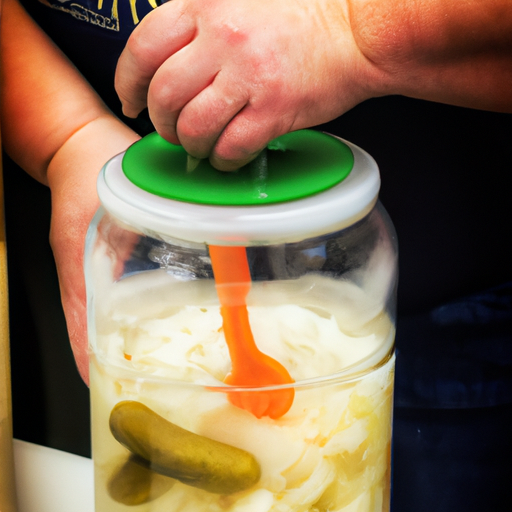Discover how traditional fermentation practices are revolutionizing contemporary cuisine and home cooking. Expert chefs and food scientists reveal the secrets behind perfect fermentation and its health benefits. Learn how to master this transformative technique with professional guidance and proven methods.

The ancient art of fermentation is experiencing a remarkable renaissance in modern kitchens, with both professional chefs and home cooks rediscovering its transformative powers. This time-honored preservation technique not only creates complex flavors but also offers numerous health benefits that align perfectly with current wellness trends.
Fermentation has been used for thousands of years across cultures to preserve food and create distinctive flavors. From Korean kimchi to European sauerkraut, these traditional methods have stood the test of time. Today, we're seeing a revival of these practices, enhanced by scientific understanding and modern equipment.
The Science Behind Fermentation
At its core, fermentation is a metabolic process that converts sugar to acids, gases, or alcohol using yeast or bacteria. This process not only preserves food but also creates beneficial compounds, including probiotics, enzymes, and vitamins. The microorganisms responsible for fermentation break down difficult-to-digest compounds, making nutrients more bioavailable and creating unique flavor profiles.
Modern science has helped us understand the precise conditions needed for successful fermentation. Temperature, salt concentration, pH levels, and oxygen exposure all play crucial roles in the process. This knowledge has enabled both professional and home fermenters to achieve consistent, safe results.
Popular Fermentation Projects for Beginners
For those new to fermentation, several projects offer an excellent starting point. Vegetable ferments like sauerkraut and kimchi are particularly forgiving and require minimal equipment. The key is using the right amount of salt and ensuring vegetables remain submerged in their brine.
Kombucha brewing has also gained significant popularity. This fermented tea beverage begins with a SCOBY (Symbiotic Culture of Bacteria and Yeast) and sweet tea. The fermentation process creates a refreshing, slightly effervescent drink that can be flavored with countless combinations of fruits and herbs.
Advanced Fermentation Techniques
As fermenters gain confidence, they often explore more complex projects. Koji, a type of mold used in Japanese cuisine, opens up a world of possibilities for creating miso, sake, and other traditional foods. Lacto-fermented hot sauces have become particularly popular among culinary enthusiasts, offering unique flavor profiles impossible to achieve through other methods.
Equipment and Safety Considerations
While our ancestors fermented foods with basic equipment, modern tools can help ensure consistent results. pH meters, airlocks, and specialized fermentation vessels help maintain optimal conditions and prevent contamination. However, it's important to note that many successful ferments can still be created with nothing more than glass jars and weight.
Safety is paramount in fermentation. Understanding the signs of successful fermentation versus spoilage is crucial. Proper sanitization of equipment, appropriate salt levels, and careful monitoring are essential practices for safe fermentation.
The Health Benefits of Fermented Foods
The wellness community has embraced fermented foods for their numerous health benefits. These foods are rich in probiotics, which support gut health and immune function. Fermentation can also increase the bioavailability of nutrients and create new beneficial compounds not present in the original ingredients.
Research continues to uncover new benefits of fermented foods, from improved digestion to potential mental health benefits through the gut-brain axis. This scientific validation has helped drive the popularity of fermented foods in health-conscious circles.
Fermentation in Professional Kitchens
Leading restaurants worldwide have embraced fermentation as a way to create unique flavors and reduce waste. Chefs experiment with different ingredients and techniques, pushing the boundaries of traditional fermentation. These innovations often trickle down to home kitchens, inspiring new approaches to familiar ingredients.
Sustainability and Fermentation
Fermentation aligns perfectly with sustainable food practices. It extends the shelf life of ingredients, reduces food waste, and requires minimal energy input. Many fermented products can be made from parts of vegetables that might otherwise be discarded, making it an excellent tool for zero-waste cooking.
The Future of Fermentation
As we look ahead, fermentation continues to evolve. New technologies and scientific understanding are helping to refine traditional techniques while inspiring innovative applications. The growing interest in gut health and sustainable food practices suggests that fermentation will remain a significant culinary trend.
Whether you're drawn to fermentation for its flavors, health benefits, or sustainability aspects, there's never been a better time to explore this fascinating culinary technique. With proper knowledge and attention to detail, anyone can successfully incorporate fermentation into their cooking repertoire.



